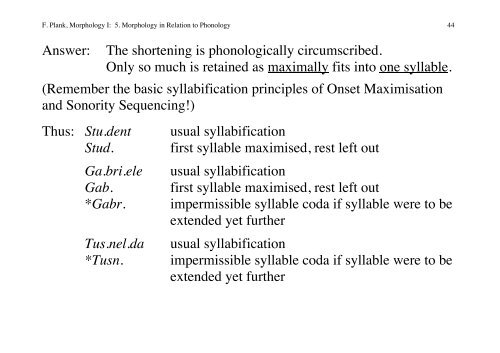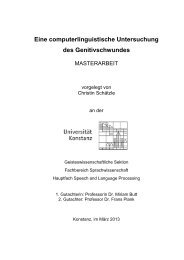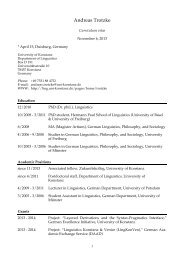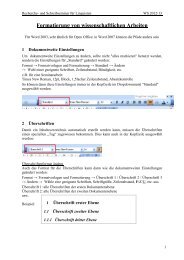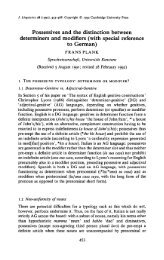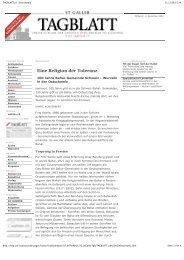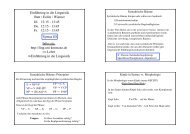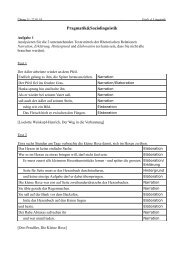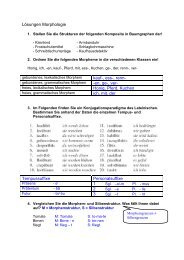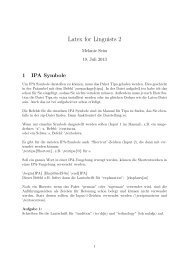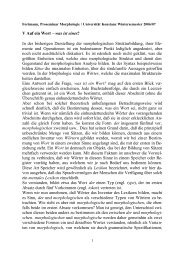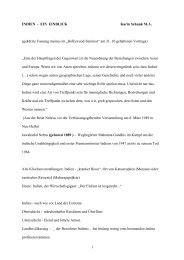5. Morphology in Relation to Phonology
5. Morphology in Relation to Phonology
5. Morphology in Relation to Phonology
Create successful ePaper yourself
Turn your PDF publications into a flip-book with our unique Google optimized e-Paper software.
F. Plank, <strong>Morphology</strong> I: <strong>5.</strong> <strong>Morphology</strong> <strong>in</strong> <strong>Relation</strong> <strong>to</strong> <strong>Phonology</strong> 44<br />
Answer:<br />
The shorten<strong>in</strong>g is phonologically circumscribed.<br />
Only so much is reta<strong>in</strong>ed as maximally fits <strong>in</strong><strong>to</strong> one syllable.<br />
(Remember the basic syllabification pr<strong>in</strong>ciples of Onset Maximisation<br />
and Sonority Sequenc<strong>in</strong>g!)<br />
Thus: Stu.dent<br />
Stud.<br />
Ga.bri.ele<br />
Gab.<br />
*Gabr.<br />
Tus.nel.da<br />
*Tusn.<br />
usual syllabification<br />
first syllable maximised, rest left out<br />
usual syllabification<br />
first syllable maximised, rest left out<br />
impermissible syllable coda if syllable were <strong>to</strong> be<br />
extended yet further<br />
usual syllabification<br />
impermissible syllable coda if syllable were <strong>to</strong> be<br />
extended yet further


